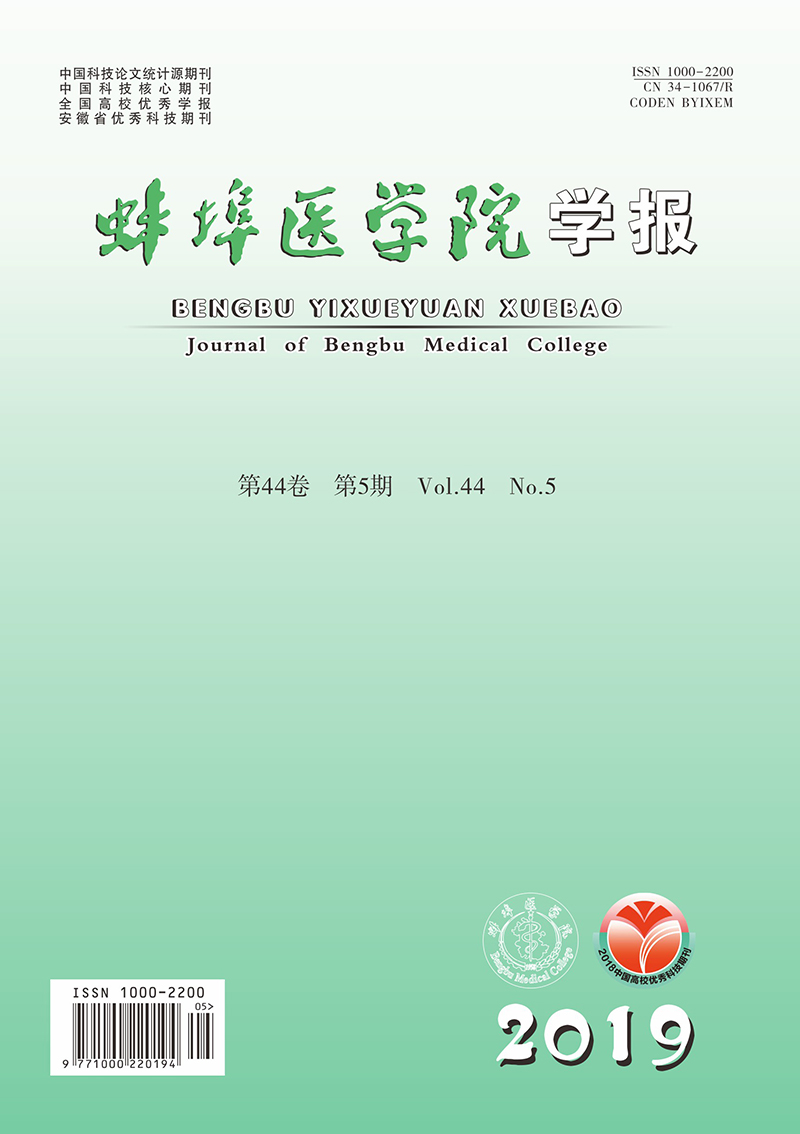-
中国是一个农业大国,农村人口占总人口的50.32%,农村人口的健康问题直接影响着社会的稳定和发展。随着经济水平的提高,新医改政策的实施,农村医疗卫生服务水平及农村人口健康状况有所改善,但慢性病持续攀升、“看病难、看病贵”、“因病滞贫”等问题仍普遍存在[1]。预防疾病的发生发展,及时有效的疾病诊治,满足农村居民对医疗服务的需求才是解决上述问题的关键。本研究就蚌埠市农村居民的健康状况及健康知识需求情况开展问卷调查,现作报道。
HTML
-
采用随机分层抽样的方法,抽取蚌埠市3个乡镇(吴小街镇、沫河口镇、李楼乡)15岁以上农村居民(具有农业户口)。根据3个乡镇人口数的不同进行分层,共发放问卷930份,其中沫河口镇566份,吴小街镇210份,李楼乡154份;回收有效问卷889份,有效率95.6%。
-
包括一般人口学资料(性别、年龄、学历);自觉健康状况、自身健康关注情况、体检情况、就医选择、常见慢性病患病情况;居民健康知识获取途径、希望获取的健康知识。
-
在参考相关文献的基础上,自行设计调查问卷,由统一培训后的调查员(蚌埠医学院全科医学系志愿者)采用统一的调查问卷对调查对象进行调查。对回收的每份调查问卷进行仔细认真核查,剔除不合格资料。
-
采用χ2检验。
1.1. 对象
1.2. 调查内容
1.3. 质量控制
1.4. 统计学方法
-
共调查889人,男434人,女455人,年龄15~69岁,基本情况见表 1。
一般人口学参数 n 构成比/% 性别 男 434 48.82 女 455 51.18 年龄/岁 15~20 201 22.61 21~50 409 46.01 51~69 279 31.38 学历 文盲 189 21.26 小学 176 19.80 初中 194 21.82 高中 150 16.87 大学及以上 180 20.25 -
33.75%自认为健康状况良好,51.85%认为健康状况一般,14.40%认为健康状况不佳。62.88%村民表示平时比较关注个人健康状况,30.26%对个人健康状况关注程度一般,而6.86%并不关注个人健康状况。
-
28.12%的居民每年体检1次;15.52%偶尔进行体检;56.36%被调查对象未进行过健康体检。对于常见病慢性病,488人(54.89%)首选村卫生室、乡镇卫生院就医,74人(8.33%)首选县级及以上医院,150人(16.87%)选择自己买药治疗,而177人(19.91%)则选择不严重不治疗。
-
调查发现,自报患病率在前8位的慢性疾病分别是:胃肠炎304例(34.20%),高血压204例(23.17%),风湿病122例(13.72%),颈椎病112例(12.60%),糖尿病105例(11.81%),腰椎间盘突出105例(11.81%),冠心病69例(7.76%),痔疮53例(5.96%)。男女胃肠炎患病率差异有统计学意义(P<0.05),而高血压、风湿病患病率男女差异均无统计学意义(P>0.05)。不同年龄、不同学历的胃肠炎、高血压、风湿病患病率差异均有统计学意义(P<0.05)(见表 2)。
一般人口学参数 n 胃肠炎 高血压 风湿病 性别 男 434 132(30.41) 98(22.58) 50(11.52) 女 455 172(37.80) 108(23.74) 72(15.82) χ2 — 5.39 0.17 3.47 P — <0.05 >0.05 >0.05 年龄/岁 15~20 201 56(27.86) 6(2.99) 2(1.00) 21~50 409 139(33.99) 80(19.56) 120(43.10) 51~69 279 2(1.00) 46(11.25) 74(26.52) χ2 — 6.54 110.68 68.23 P — <0.05 <0.05 <0.05 学历 文盲 189 76(40.21) 77(40.74) 48(25.40) 小学 176 64(36.36) 58(32.95) 34(19.32) 初中 194 61(31.44) 46(23.71) 24(12.37) 高中 150 16(10.67) 18(12.00) 10(6.67) 大学及以上 180 10(5.56) 7(3.89) 6(3.33) χ2 — 32.45 90.37 49.43 P — <0.05 <0.05 <0.05 -
对于目前获取健康知识的途径,选择电视的566人(63.67%),其次是网络397人(44.66%),咨询医生349人(39.26%),报刊杂志192人(21.60%),而选择健康知识讲座的最少,只有143人(16.09%)。调查对象中,希望获取的健康知识是常见病的预防632人(71.09%),常见病的治疗561人(63.10%),急性病发作的应急处理482人(54.22%),常见病的症状442人(49.72%)。
2.1. 基本情况
2.2. 自觉健康状况和健康关注情况
2.3. 体检情况和就医选择
2.4. 常见慢性病患病情况
2.5. 居民获取健康知识途径及希望获取的健康知识
-
调查发现,部分农村居民平时忽视个人健康状况,56.36%的居民从未进行过健康体检,对于常见病慢性病的处理,部分人会选择自己买药治疗或者不严重不治疗的方案,表明蚌埠市农村居民缺乏自我保健意识,对健康教育相关知识知晓率不高,导致疾病发生,家庭医疗负担增加,出现因病致贫、因病返贫现象。研究[2]表明,通过健康教育可以提高居民的健康意识,减少疾病的发生,降低医疗费用的支出。但开展健康教育,往往是公益性的,所以政府组织应出台相关政策鼓励和保障医疗卫生机构开展健康教育活动,另外还要支持一些科研机构开发有关健康教育的素材。
本研究中居民获取健康知识的途径主要是通过电视和网络,通过这种途径获取的知识往往需要甄别、摘选,但大多数人由于学历受限或不具备医学专业知识,甄别、摘选信息比较困难。因此相关机构在开展健康教育的同时,要注意培养居民的健康信息评价能力,即受教育者能够对健康信息的质量、真假正确辨别,从而获取真正符合自身需要的健康信息。调查中还发现不同人群希望获取健康知识的内容是不同的,要求我们根据居民对健康知识需求的不同,针对不同的人群,选择适宜的、有针对性的健康教育内容。
慢性病患病率可作为居民健康状况及卫生服务需求的指标,本次调查显示蚌埠市农村居民慢性病患病率居前三位的依次是胃肠炎、高血压、风湿病,与文献[3]报道略有不同。本文结果还显示,女性胃肠炎患病率高于男性。研究[4-5]表明,胃肠炎的发生与心理因素有关,情绪变化会导致胃肠功能的改变,女性较男性心理防御能力差,情绪易波动,所以女性胃肠炎的发生高于男性。胃肠炎、高血压、风湿病患病率的年龄分布不同,随着年龄的增长,患病率增高,与何利平等[6-7]的研究结果一致。不同年龄组的胃肠炎、高血压、风湿病患病率不同可能是由疾病的病因病理、发病机制、发展趋势决定的[8],另外随着年龄的增长,人体的器官功能不断衰退,生理功能下降,防御功能不足,患病概率也会增加。不同学历居民的胃肠炎、高血压、风湿病患病率不同,文化程度越高,患病率越低,可能是由于文化程度高的居民自我保健意识较好且生活水平较高[9-10]。调研访谈中,许多居民表示,当地慢性病的发生多与当地的环境卫生、生活方式等因素相关,需要引起重视,进一步研究。
我国慢性病患病率逐年上升,严重威胁了居民的健康,并具有“患病人数多、病程长、服务需求大”等特点[11]。对于常见慢性病一半及以上居民会首选基层医疗机构就医,只有在慢性病急性加重或慢性病持续控制不佳时才会选择县级或以上医院,表明蚌埠市农村地区的慢性病对医疗服务的需求较大,特别是基层医疗机构对农村居民的健康保障发挥着主力军的作用[12]。当地政府组织应重视慢性病的防控,特别是要重视基层医疗机构对慢性病的教育、诊治、管理的作用。何权瀛[13]报道慢性病的防控重点在基层, 慢性病防控工作要靠全科医生。但目前我国农村基层医疗队伍的质量和数量远不能满足农村居民的健康需求,因此国家要重视和完善基层医疗人才的培养[14],如继续实施订单定向免费医学生培养政策,既能解决基层卫生人才的短缺,又能提高基层医疗卫生队伍的整体素质和服务水平,但要注意对基层定向人员,在政策上及经济上要有所倾斜,便于留住人才。另外要重视加强对农村基层医疗队伍的培训,以提高农村基层队伍的整体医疗服务水平[15],满足居民的医疗保健需求。






 DownLoad:
DownLoad: